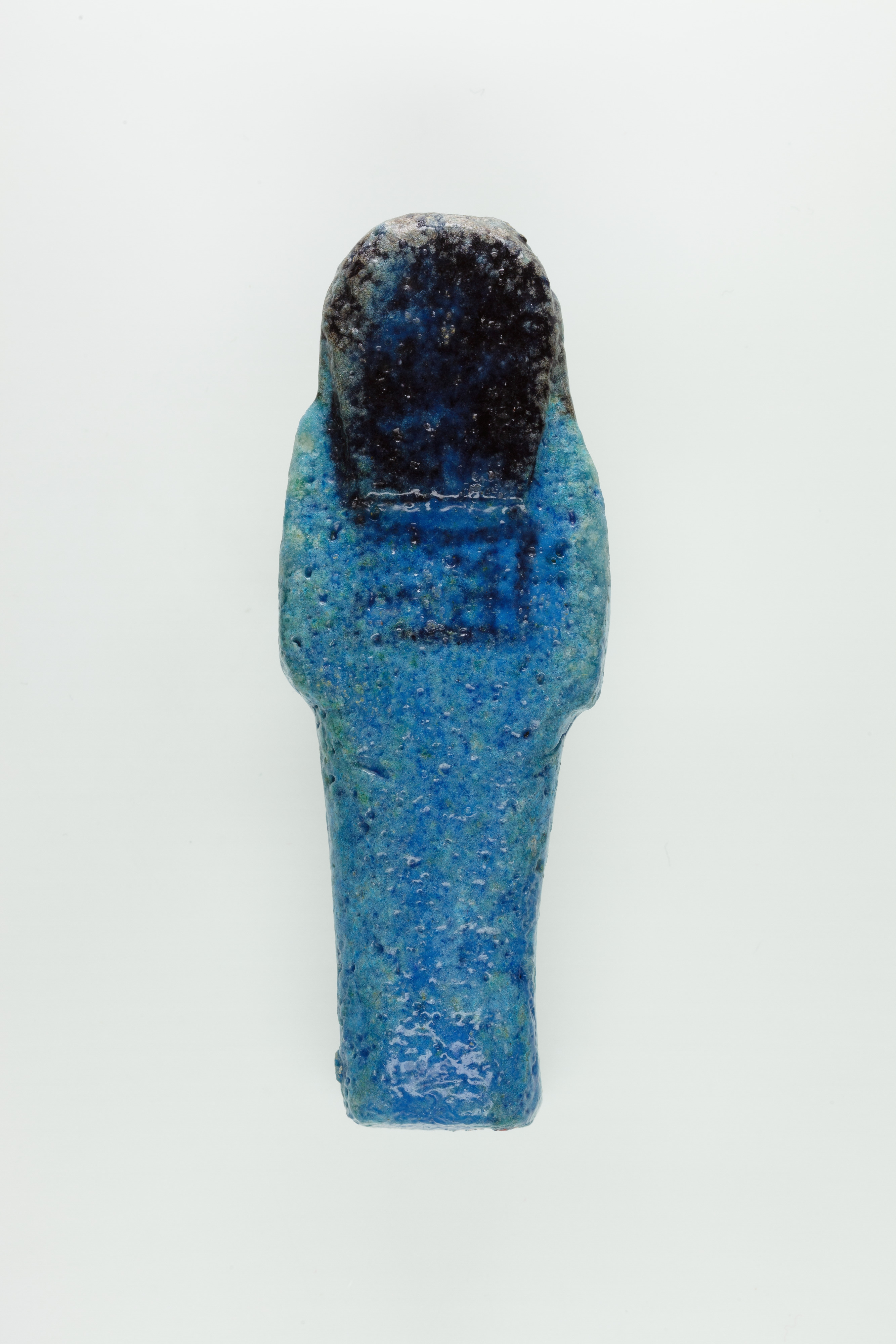Worker Shabti of Nauny
Third Intermediate Period
Almost 400 small funerary figures known as shabtis were found with Nauny’s burial. These can be seen as avatars, meant to carry out agricultural labor on Nauny’s behalf in the afterlife. Of the 393 shabtis discovered, 355 were workers like this one, and 37 were overseers (see for example <a href="https://www.metmuseum.org/art/collection/search/551114">30.3.28.3</a>). Based on other assemblages from this era, Nauny originally might have had a total of 365 workers, one for each day of the year. This mummiform figure holds a hoe in each hand and has a basket on its back. The inscription on the front of the body calls Nauny a King’s Daughter, and an “illuminated Osiris.” This indicated that she had been transformed through the process of mummification and identified with the principal god of the dead, then reanimated by the light of the sun god as he traveled through the Netherworld each night. Nauny’s shabtis were divided between seven boxes. Five of these, with their shabtis, were given to The Met, while two were sent to the Egyptian Museum in Cairo.
Due to rights restrictions, this image cannot be enlarged, viewed at full screen, or downloaded.
This artwork is meant to be viewed from right to left. Scroll left to view more.



